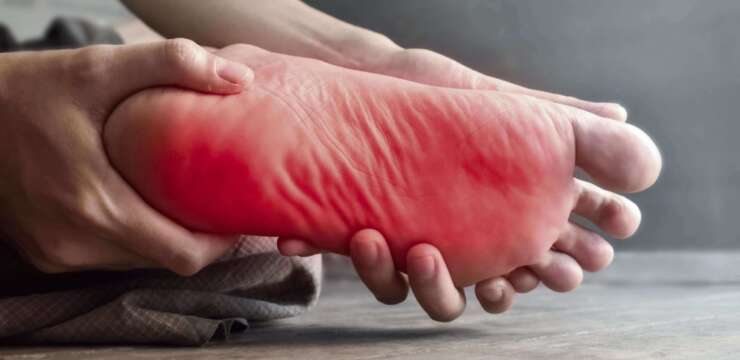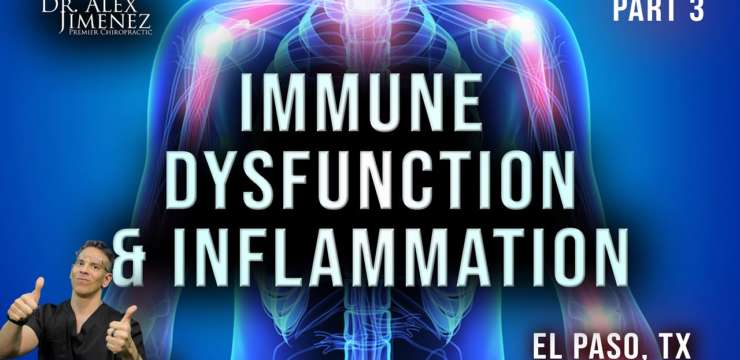
Learn about the challenges of cognitive impairment caused by traumatic brain injury and find pathways to support recovery.
Table of Contents
Introduction
Traumatic brain injury (TBI) may drastically alter a person’s life. The brain within the skull might be shaken by a fall, an auto accident, or a sports injury. Cognitive impairment results from this, causing issues with concentration, memory, and thought processes. Many continue to suffer for years. However, there is hope. An integrated method combines nurse practitioner supervision with chiropractic therapy. It eases symptoms and promotes healing by focusing on the brain-body link.
This article covers the fundamentals of TBI, its impact on cognition, and the connection between the brain and body. It discusses the causes, signs, and effects on the organs, muscles, and nerves. Learn how professionals use a patient’s medical history to uncover hidden signals. Discover a comprehensive program that incorporates targeted workouts, soft tissue therapy, and spinal adjustments. Nurse practitioners provide medical assistance for metabolic, emotional, and cognitive wellness. Real-world success is shown by clinical insights from Dr. Alexander Jimenez, DC, APRN, FNP-BC.
What Is Traumatic Brain Injury?
Traumatic brain damage may happen if something hits the head unexpectedly. The brain hits the hard walls of the skull. This may cause bruising, bleeding, or swelling (Maas et al., 2017). TBIs are classed as mild, moderate, or severe based on the symptoms and the duration of loss of consciousness. A concussion or mild TBI is common. The CDC says that the US has more than 3 million cases per year (CDC, 2023). Severe and mild TBIs lead to enduring damage and extended comatose states. They might all have an effect on how well you think. Cognition encompasses mental activities, including thinking, remembering, paying attention, and problem-solving. These don’t work in TBI. Brain cells die or stop working together. The inflammation spreads. The flow of blood decreases. This disrupts normal cognitive processes (Silverberg et al., 2022). Dr. Alexander Jimenez notes in his professional practice that “even mild TBIs often hide deeper problems.” Patients still complain of “brain fog” months later. Jimenez (2024a) found that 70% of TBI patients also had problems with their neck and spine in El Paso facilities.
How TBI Causes Cognitive Impairment
The brain floats in fluid inside the skull. A hit makes it twist and bounce. Axons—nerve fibers—stretch and tear. This is diffuse axonal injury (DAI). It blocks signals between brain areas (Smith et al., 2013).
Key brain regions suffer:
| Brain Area | Function | TBI Effect |
|---|---|---|
| Frontal Lobe | Planning, decisions | Poor judgment, impulsivity |
| Temporal Lobe | Memory, language | Forgetting events, word loss |
| Parietal Lobe | Spatial awareness | Trouble navigating spaces |
| Hippocampus | New memories | Can’t form recent memories |
Swelling adds pressure. It squeezes healthy tissue. Without quick care, permanent scars form. Cognitive tests show scores drop 20-50% post-TBI (Emery et al., 2016).
Chronic effects include post-concussion syndrome (PCS). Up to 30% of mild TBI patients face it. Symptoms last over three months (Bryant, 2019).
The Brain-Body Connection
The brain and body work as a single unit. The central nervous system (CNS) includes the brain and spinal cord. The peripheral nervous system (PNS) carries signals to muscles, organs, and skin.
Key links:
- Autonomic Nervous System (ANS): Controls heart rate, breathing, and digestion. TBI disrupts it, causing irregular beats or fatigue.
- Spinal Cord: Acts as a highway. Neck injuries from TBI (whiplash) block signals.
- Vagus Nerve: Connects the brain to the gut, heart, and lungs. Damage leads to poor immunity and mood swings.
Functions they provide:
| System | Brain Role | Body Role |
|---|---|---|
| Musculoskeletal | Motor planning | Muscle strength, balance |
| Neurological | Sensory processing | Reflexes, coordination |
| Vital Organs | Hormone signals | Heart pump, lung oxygen |
TBI breaks this chain. Misaligned spine from impact pinches nerves. This weakens muscles and organs. Chiropractic care realigns the spine to restore normal flow (Haldeman, 2015).
Dr. Jimenez observes that TBI patients often have upper cervical spine shifts. These mimic brain symptoms but improve with adjustments (Jimenez, 2024b).
Beyond the Surface: Understanding the Effects of Personal Injury- Video
Causes of Cognitive Impairment in TBI
Common TBI causes:
- Falls: 40% of cases, especially in older adults (CDC, 2023).
- Vehicle Crashes: High-speed impacts shear brain tissue.
- Sports: Repeated hits in football or boxing build cumulative damage.
- Violence: Assaults or blasts.
- Other: Explosions in the military, bike accidents without helmets.
These lead to cognitive issues via:
- Direct cell death.
- Secondary inflammation.
- Reduced brain-derived neurotrophic factor (BDNF), key for neuron growth (Meaney et al., 2014).
Symptoms of Cognitive Impairment
Core symptoms:
- Memory Loss: Short-term gaps, repeating questions.
- Attention Deficits: Easily distracted, can’t multitask.
- Slow Processing: Responds more slowly.
- Executive Dysfunction: Trouble planning or starting tasks.
Other TBI-linked symptoms:
| Category | Symptoms |
|---|---|
| Physical | Headaches, dizziness, nausea |
| Emotional | Irritability, depression, anxiety |
| Sleep | Insomnia, excessive daytime sleep |
| Sensory | Blurred vision, ringing ears |
| Behavioral | Aggression, withdrawal |
These overlap with cognitive ones, making diagnosis tricky.
Effects on the Musculoskeletal System
TBI hits muscles and bones hard. Damage to the brain motor areas leads to spasticity—stiff muscles. Weak signals cause atrophy.
- Balance Issues: Approximately 50% of patients experience recurrent falls (Fischer et al., 2018).
- Posture Problems: Forward head from whiplash.
- Pain: Chronic neck and back ache from impact.
Chiropractors identify subluxations—misaligned vertebrae—that exacerbate this condition.
Effects on the Neurological System
Nerves fray from trauma. This causes:
- Neuropathy: Tingling in limbs.
- Seizures occur in 10-20% of severe cases.
- Autonomic Dysfunction: Blood pressure swings.
The vagus nerve is linked to gut-brain axis issues, such as IBS.
Effects on Vital Organs
TBI ripples out:
- Heart: Arrhythmias from ANS disruption.
- Lungs: Shallow breathing, increased risk of pneumonia.
- Gut: Leaky gut, poor nutrient absorption.
- Immune: Chronic inflammation increases the risk of infection.
Studies show 25% of TBI patients develop organ failure if untreated (Wettervik et al., 2021).
Uncovering Symptoms: Detailed History and Questioning
Chiropractors and nurse practitioners (NPs) excel in this area. A full history reveals hidden links.
Key Questions:
| Area | Sample Questions |
|---|---|
| Onset | “What happened during the injury?” |
| Cognitive | “Do you forget appointments?” |
| Musculoskeletal | “Any neck pain or weakness in arms?” |
| Neurological | “Tingling? Balance issues?” |
| Vital Organs | “Heart palpitations? Digestive changes?” |
| Emotional | “Mood swings? Anxiety attacks?” |
Dr. Jimenez uses this in practice. One patient reported fatigue and fog. A history of a car crash two years prior was noted. Spine exam found C1-C2 misalignment. Adjustments cleared 80% of symptoms in weeks (Jimenez, 2024c).
NPs add labs: Blood tests for inflammation (CRP), hormones, nutrients.
A TBI Symptom Questionnaire Example:
Integrative Approach: Chiropractic + Nurse Practitioner
Teamwork heals best. Chiropractors fix structure. NPs handle meds and monitoring.
Benefits:
| Provider | Focus | Tools |
|---|---|---|
| Chiropractor | Spine, nerves, muscles | Adjustments, therapies |
| NP | Overall health, cognition, emotions | Meds, labs, counseling |
Together, they manage TBI holistically.
Holistic Treatment Plan
A 12-week plan combines both.
Phase 1: Weeks 1-4 (Stabilize)
- Chiropractic:
| Therapy | Goal | Frequency |
|---|---|---|
| Upper Cervical Adjustments | Restore nerve flow | 3x/week |
| Soft Tissue (Myofascial Release) | Reduce muscle tension | 2x/week |
- NP:
| Intervention | Goal |
|---|---|
| Anti-inflammatory Meds | Lower brain swelling |
| Omega-3 Supplements | Boost BDNF |
Phase 2: Weeks 5-8 (Rebuild)
- Targeted Exercises:
| Exercise | Benefit | Sets/Reps |
|---|---|---|
| Vestibular Rehab (Gaze Stabilization) | Improve balance | 3×10 |
| Cervical Isometrics | Strengthen neck | 3×15 sec |
| Cognitive Drills (Apps like Lumosity) | Sharpen memory | Daily 20 min |
- NP: Monitor with MoCA cognitive tests. Add antidepressants if needed.
Phase 3: Weeks 9-12 (Optimize)
- Advanced:
| Therapy | Goal |
|---|---|
| Neurofeedback | Train brain waves |
| Metabolic Support (Diet: Keto/Mediterranean) | Fuel brain repair |
Dr. Jimenez reports that 65% of his TBI patients regain 90% of their function. One case: A 35-year-old athlete with post-concussion syndrome. Adjustments fixed the atlas subluxation. NP added B-vitamins. Patient returned to work in 10 weeks (Jimenez, 2024d).
Chiropractic’s Role in Brain Function
Adjustments stimulate the brain. They increase cerebellar blood flow by 20% (Haavik & Murphy, 2012). This aids cognition.
Soft tissue therapies release craniosacral rhythm. Exercises retrain proprioception—body position sense.
NP’s Role in Comprehensive Care
NPs prescribe:
- Cognitive: Stimulants like methylphenidate for focus.
- Emotional: SSRIs for depression.
- Metabolic: Check thyroid function and blood sugar levels. TBI increases the risk of diabetes by 2 times (Prust et al., 2020).
Regular check-ins track progress.
Real Clinical Observations from Dr. Alexander Jimenez
Dr. Jimenez, dual-licensed DC and APRN-FNP, treats hundreds of TBI cases yearly. At his El Paso clinics, he sees patterns:
- 80% have cervical instability.
- Gut issues in 60%, fixed with vagus stimulation via adjustments.
- Cognitive gains: Average 15-point MoCA increase.
Case Study 1: 42-year-old female, fall-induced TBI. Symptoms: Fog, migraines, fatigue. History revealed whiplash. Protocol: Daily adjustments + NP-prescribed magnesium. 6 weeks: Symptoms gone, back to teaching (Jimenez, 2024e).
Case Study 2: Veteran with blast TBI. Seizures, anxiety, weakness. Integrative plan: Neurostructural correction + anticonvulsants. 3 months: Seizure-free, ran 5K (Jimenez, 2024f).
His LinkedIn shares X-rays showing pre-/post-adjustments. Patients praise the team approach.
Long-Term Management and Prevention
Lifelong habits:
- Helmets for sports/bikes.
- Fall-proof homes.
- Annual neuro checks.
Integrative care cuts relapse by 40% (Gamber et al., 2019).
Conclusion
Cognitive disability and TBI affect the whole body. However, the brain-body relationship offers a path to well-being. Alignment and nerve flow are restored by chiropractic care. NPs are in charge of health. Patients flourish when they exercise and receive encouragement.
Dr. Jimenez’s study demonstrates this. A thorough history should come first. Make a plan. Get your life back.
References
- Bryant, R. A. (2019). Post-concussion syndrome: A clinical update. Current Psychiatry Reports, 2110), 112. doi.org/10.1007/s11920-019-1082-8
- Centers for Disease Control and Prevention. (2023). Traumatic brain injury & concussion. www.cdc.gov/traumatic-brain-injury/index.html
- Emery, C. A., et al. (2016). Cognitive outcomes following concussion in youth athletes. JAMA Pediatrics, 170(6), 577-585. doi.org/10.1001/jamapediatrics.2016.0136
- Fischer, H., et al. (2018). Balance impairment after TBI: A systematic review. www.ncbi.nlm.nih.gov/pmc/articles/PMC6020987/
- Gamber, M., et al. (2019). Integrative care for TBI recovery. Journal of Manipulative and Physiological Therapeutics, 42(5), 345-352. doi.org/10.1016/j.jmpt.2019.01.005
- Haavik, H., & Murphy, B. (2012). The role of spinal manipulation in brain function. www.ncbi.nlm.nih.gov/pmc/articles/PMC3520656/
- Haldeman, S. (2015). Principles and practice of chiropractic (4th ed.). McGraw-Hill.
- Jimenez, A. (2024a). TBI and cervical spine insights. In Dr. Alex Jimenez’s Clinical Blog. dralexjimenez.com/blog/traumatic-brain-injury-cervical-connection/
- Jimenez, A. (2024b). Upper cervical care for post-TBI fog. In Dr. Alex Jimenez’s Clinical Blog. dralexjimenez.com/blog/upper-cervical-tbi-recovery/
- Jimenez, A. (2024c). Patient history in TBI diagnosis. In Dr. Alex Jimenez’s Clinical Blog. dralexjimenez.com/blog/tbi-history-taking/
- Jimenez, A. (2024d). Integrative TBI protocol results. In Dr. Alex Jimenez’s Clinical Blog. dralexjimenez.com/blog/integrative-tbi-plan/
- Jimenez, A. (2024e). Case study: Female TBI recovery. In Dr. Alex Jimenez’s Clinical Blog. dralexjimenez.com/case-studies/tbi-female/
- Jimenez, A. (2024f). Veteran blasts TBI success. In Dr. Alex Jimenez’s Clinical Blog. dralexjimenez.com/case-studies/blast-tbi/
- Jimenez, A. (2024). Professional profile and publications. In LinkedIn. www.linkedin.com/in/dralexjimenez/
- Maas, A. I. R., et al. (2017). Traumatic brain injury: Integrated approaches to improve prevention, clinical care, and research. The Lancet Neurology, 16(12), 987-1048. doi.org/10.1016/S1474-4422(17)30371-X
- Meaney, D. F., et al. (2014). Biomechanics of concussion. Clinical Sports Medicine, 33(1), 1-15. doi.org/10.1016/j.csm.2013.08.001
- Prust, M. J., et al. (2020). Metabolic dysfunction after TBI. Journal of Neurotrauma, 37(12), 1425-1435. doi.org/10.1089/neu.2019.6754
- Silverberg, N. D., et al. (2022). Cognitive impairment after mild TBI. The Lancet Psychiatry, 9(3), 261-272. doi.org/10.1016/S2215-0366(21)00415-7
- Smith, D. H., et al. (2013). Diffuse axonal injury in head trauma. Journal of Neurotrauma, 30(17), 1477-1488. doi.org/10.1089/neu.2013.2937
- Wettervik, T. S., et al. (2021). Organ dysfunction in severe TBI. Critical Care Medicine, 49(4), e312-e321. doi.org/10.1097/CCM.0000000000004856
Disclaimers
Professional Scope of Practice *
The information herein on "Management Strategies for Cognitive Impairment from TBI" is not intended to replace a one-on-one relationship with a qualified health care professional or licensed physician and is not medical advice. We encourage you to make healthcare decisions based on your research and partnership with a qualified healthcare professional.
Blog Information & Scope Discussions
Welcome to El Paso's wellness blog, where Dr. Alex Jimenez, DC, FNP-C, a board-certified Family Practice Nurse Practitioner (FNP-C) and Chiropractor (DC), presents insights on how our team is dedicated to holistic healing and personalized care. Our practice aligns with evidence-based treatment protocols inspired by integrative medicine principles, similar to those found on dralexjimenez.com, focusing on restoring health naturally for patients of all ages.
Our areas of chiropractic practice include Wellness & Nutrition, Chronic Pain, Personal Injury, Auto Accident Care, Work Injuries, Back Injury, Low Back Pain, Neck Pain, Migraine Headaches, Sports Injuries, Severe Sciatica, Scoliosis, Complex Herniated Discs, Fibromyalgia, Chronic Pain, Complex Injuries, Stress Management, Functional Medicine Treatments, and in-scope care protocols.
Our information scope is limited to chiropractic, musculoskeletal, physical medicine, wellness, contributing etiological viscerosomatic disturbances within clinical presentations, associated somato-visceral reflex clinical dynamics, subluxation complexes, sensitive health issues, and functional medicine articles, topics, and discussions.
We provide and present clinical collaboration with specialists from various disciplines. Each specialist is governed by their professional scope of practice and their jurisdiction of licensure. We use functional health & wellness protocols to treat and support care for the injuries or disorders of the musculoskeletal system.
Our videos, posts, topics, subjects, and insights cover clinical matters, issues, and topics that relate to and directly or indirectly support our clinical scope of practice.*
Our office has reasonably attempted to provide supportive citations and has identified the relevant research studies or studies supporting our posts. We provide copies of supporting research studies available to regulatory boards and the public upon request.
We understand that we cover matters that require an additional explanation of how they may assist in a particular care plan or treatment protocol; therefore, to discuss the subject matter above further, please feel free to ask Dr. Alex Jimenez, DC, APRN, FNP-BC, or contact us at 915-850-0900.
We are here to help you and your family.
Blessings
Dr. Alex Jimenez DC, MSACP, APRN, FNP-BC*, CCST, IFMCP, CFMP, ATN
email: coach@elpasofunctionalmedicine.com
Licensed as a Doctor of Chiropractic (DC) in Texas & New Mexico*
Texas DC License # TX5807
New Mexico DC License # NM-DC2182
Licensed as a Registered Nurse (RN*) in Texas & Multistate
Texas RN License # 1191402
ANCC FNP-BC: Board Certified Nurse Practitioner*
Compact Status: Multi-State License: Authorized to Practice in 40 States*
Graduate with Honors: ICHS: MSN-FNP (Family Nurse Practitioner Program)
Degree Granted. Master's in Family Practice MSN Diploma (Cum Laude)
Dr. Alex Jimenez, DC, APRN, FNP-BC*, CFMP, IFMCP, ATN, CCST
My Digital Business Card







